Prairie verbena as part of a different color combination
You’ve seen prairie verbena, Glandularia bipinnatifida, in several views this season, including yesterday’s, and that’s only appropriate for one of the most common wildflowers in central Texas. You’ve seen even more photographs lately of firewheels, Gaillardia pulchella, also known as Indian blankets, which were and still are abundant this spring. A colony of them forms the backdrop for today’s portrait of verbena, which I made on May 1 in a “vacant” lot on the west side of Interstate 35 near Wells Branch Parkway in far north Austin. Note the tiny bug on the verbena.
© 2013 Steven Schwartzman

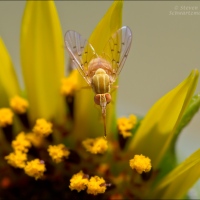
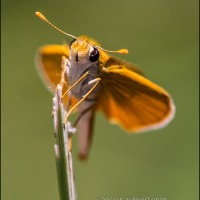
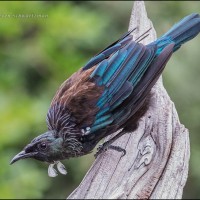
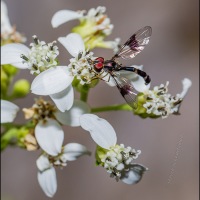
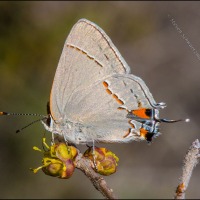
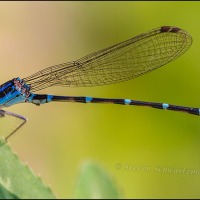
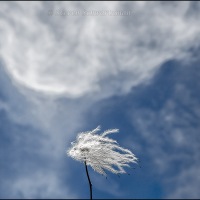
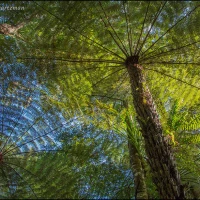

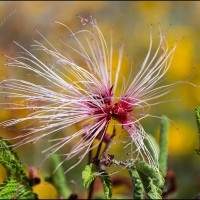
Gorgeous shot, Steven. I love the background and the “bonus” bug, which seems to be really, really small.
Mike Powell
May 14, 2013 at 6:36 AM
Something I often find myself doing is playing off one color or set of colors against another, and this is a pleasant example. I also often encounter tiny insects and spiders, some of which I don’t even notice till I get back home and see an image enlarged on my monitor, though I think I saw this one at the time I took the picture.
Steve Schwartzman
May 14, 2013 at 6:57 AM
You know, I’ve always thought of gaillardia as a summer/early fall wildflower. Are they early this year, or do they just have a longer season than I’ve realized? (Well – I see they are listed at the Ladybird Johnson site as blooming in May, and there’s a note they may bloom longer with abundant rains. So I just answered my own question.) Lovely photo. The color combination works better than I would have thought.
shoreacres
May 14, 2013 at 7:39 AM
Outside of traditional cultures in places like Guatemala and Indonesia, I guess we don’t often see color combinations like this, but nature has no compunctions against dressing up this way.
As for the bloom period of Gaillardia pulchella, Wildflowers of the Texas Hill Country gives April–June, but Wildflowers of Houston gives February–December; I expect your wetter climate accounts for the extended season near the coast. Even there, though, I’m guessing the peak would still be in May, with smaller amounts at the extremes of the season. You can keep your eye on that as the year advances.
Steve Schwartzman
May 14, 2013 at 8:37 AM
Absolutely beautiful!!!!!
Kathy Comer
Kathy Comer
May 14, 2013 at 8:26 AM
Thanks, Kathy. The piece of land along Interstate 35 where I photographed this has a fast-food restaurant on one side and parts of an apartment complex on two others. I’m afraid it won’t be long before some structure covers this piece of prairie, too.
Steve Schwartzman
May 14, 2013 at 8:40 AM
So pretty. I have seen huge colonies of verbena going the back way to Austin. Oustanding wildflowers this years as you have written. I think the flowers are better going south than what I’ve seen in my area. I know you are happy to have such an abundant supply of photo ops.
petspeopleandlife
May 14, 2013 at 9:38 AM
I’ve seen larger colonies of verbenas in some other years, but we have an excellent suppy of smaller groups this time around. As you said, I’m happy with them.
Steve Schwartzman
May 14, 2013 at 2:07 PM
This is amazing! The background color complements the colors of the prairie verbena, making it stand out even more. Beautiful combination!
Gracie
May 14, 2013 at 9:51 AM
Thanks, Gracie. I’m big on color combinations, both harmonious and contrasting, as people have been able to tell from some of the pictures I’ve posted.
Steve Schwartzman
May 14, 2013 at 2:09 PM
Beautiful! Lovely background!
Inge
May 14, 2013 at 10:11 AM
Long live pleasant backgrounds!
Steve Schwartzman
May 14, 2013 at 2:09 PM
It’s a beautiful picture of a beautiful flower. If we have that flower here, I’m unaware of it. But being a Faulkner fan, I cannot see the word “verbena” without thinking of his story “An Odor of Verbena.” What kind of fragrance does the flower have?
Bill
May 14, 2013 at 2:38 PM
I checked the USDA map at
http://plants.usda.gov/java/profile?symbol=GLBI2
and found you’re right that this species isn’t listed for any part of Virginia (I believe that’s where you are). The closest to Virginia it’s been found is in Maryland, Kentucky, and Tennessee. On the other hand, Glandularia canadensis, which I’m not familiar with, is listed for Virgina; that species is reported to be fragrant.
As for fragrances themselves, I don’t know how to describe them. I wish I could bottle some of the scent and post it to my blog, but that technology still awaits us.
Steve Schwartzman
May 14, 2013 at 3:08 PM
Beautiful shot, Steve.
fredodonnellphotography
May 14, 2013 at 4:41 PM
Thanks, Fred. I was pleased with the way it came out.
Steve Schwartzman
May 14, 2013 at 4:46 PM
[…] prairie verbena, Glandularia bipinnatifida, that I’ve ever seen. The previous post showed you what one of these flower heads normally looks like. Happy […]
Prairie verbena when it’s fasciated | Portraits of Wildflowers
May 15, 2013 at 6:16 AM
La fleur est superbe mais le fond l’est aussi ce qui donne une photo vraiment agréable.
Le soleil est absent ici, l’eau très présente, ce qui retarde la floraison des alpages. J’attends patiemment mais ça commence à manquer le plaisir de s’asseoir dans un champ en fleur aux multiples variétés.
lancoliebleue
May 16, 2013 at 12:59 AM
J’ai pensé souvent que le fond est aussi important que le sujet, et c’est pourquoi j’essaie de faire toujours attention au fond d’une photo.
Quant à ton second commentaire: viens au Texas!
Steve Schwartzman
May 16, 2013 at 7:12 AM
Very nice, steve!
janina
May 18, 2013 at 2:00 AM
Thanks, Janina
Steve Schwartzman
May 18, 2013 at 7:05 AM
[…] spring, and all have been regular visitors in these pages: old plainsman, Hymenopappus scabiosaeus; prairie verbena, Glandularia bipinnatifida; greenthread, Thelesperma filifolium; firewheel or Indian blanket, […]
The vanishing prairie | Portraits of Wildflowers
August 31, 2013 at 6:32 PM
[…] the yellow are greenthreads, Thelesperma filifolium; the bits of purple at the right are prairie verbena, Glandularia […]
Some updates, several of which are downers | Portraits of Wildflowers
September 16, 2013 at 6:15 AM